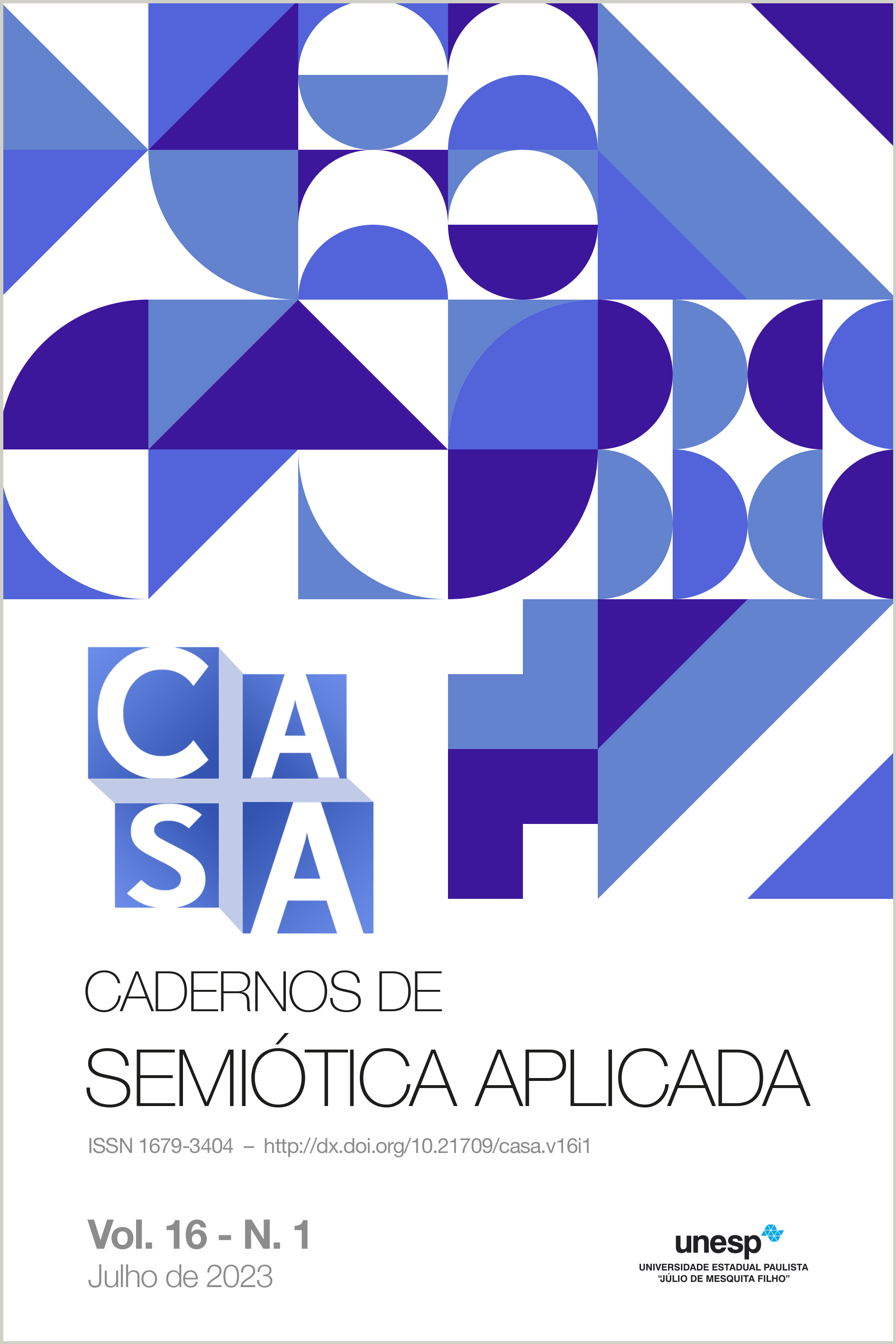TIMBRE COMO IDENTIDADE SONORA: UMA PROPOSTA DE SEMIOTIZAÇÃO
TIMBRE AS SOUND IDENTITY: A SEMIOTICAL APPROACH
DOI:
https://doi.org/10.21709/casa.v16i1.17814Keywords:
Tone colour, Figurativity, Iconization, Tensive schemeAbstract
Timbre is commonly defined as an acoustic property that identifies the source of a given sound event. Current literature on the subject presents a double description strategy, either by nominalization or by qualification. This timbre-generated identity can be semiotically described by means of the concept of figurativity, as well as semantic enrichment. These concepts were articulated through the analytical tools of the tensive schematism. The developed model is successful in covering a gradual scale of timbral identities, going from the most generic up to the most specific. This scale can be segmented into three major regions of specification: a minimum level, an intermediate level, and a maximum level. At the first one, the timbre is nonspecific and only renders the identification of abstract qualities possible. The intermediate level comprises descriptions and categorizations of timbre into the so-called instrument families, identifiable through its most prototypical member. The last degree comprises those identifiable to unique and exclusive entities in the natural world. These timbres are often referred to through anthroponyms. Such timbristic identities are built up by the discourse. The results of this study display an abstract model of semiotic description of timbre that outdo specific timbre typologies.
Downloads
Published
Issue
Section
License
Copyright (c) 2023 CASA: Cadernos de Semiótica Aplicada

This work is licensed under a Creative Commons Attribution-NonCommercial-NoDerivatives 4.0 International License.
The authors of the approved papers agree to grant non-exclusive publication rights to CASA. Thus, authors are free to make their texts available in other media, provided that they mention that the texts were first published in CASA: Cadernos de Semiótica Aplicada. Besides, they authorize the Journal to reproduce their submission in indexers, repositories, and such. Authors are not allowed to publish the translation of the published paper to another language without the written approval of the Executive Editors. The authors are totally responsible for the content of the published work.

